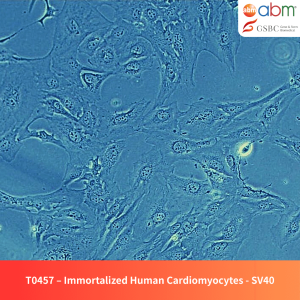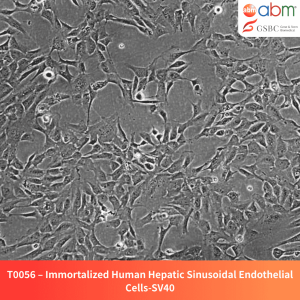Product Details
- Catalog Number: T0259
- Unit Size: 1 x 10⁶ cells / 1.0 mL
- Species: Human (Homo sapiens)
- Tissue of Origin: Brain
- Cell Type: Immortalized Cerebral Microvascular Endothelial Cells
- Growth Properties: Adherent, polygonal morphology
- Immortalization Method: SV40 large T antigen transduction
- BioSafety Level: BSL-2
- Storage: Vapor phase of liquid nitrogen or below -130°C
- Shipping: Shipped on dry ice
- Format: Cryopreserved frozen cells
Overview
Immortalized Human Cerebral Microvascular Endothelial Cells – SV40 provide a reliable and reproducible platform for in vitro studies of brain endothelial functions. These cells have been genetically modified to express the SV40 large T antigen, allowing extended culture periods while maintaining endothelial characteristics. They serve as a valuable tool for research on neurodegenerative diseases, CNS drug permeability, and blood-brain barrier modeling.
Key Features and Benefits
- Long-Term Stability: Immortalized for extended culture duration without senescence.
- Consistent Reproducibility: Ensures reliable experimental outcomes.
- Ideal for Neurovascular Research: Suitable for blood-brain barrier, neuroinflammation, and CNS drug transport studies.
- Optimized Growth Conditions: Adapted to specific media and extracellular matrices for enhanced viability.
- Adherent Growth Properties: Facilitates easy handling and maintenance in culture.
Culture & Handling Guidelines
Recommended Culture Conditions
- Coating: Use PriCoat™ T25 Flasks (G299) or Applied Cell Extracellular Matrix (G422) for optimal adhesion.
- Growth Medium: PriGrow I (TM001) supplemented with:
- 10% Fetal Bovine Serum (FBS)
- 1% Penicillin/Streptomycin (G255)
- Incubation Conditions: Maintain at 37°C in a humidified atmosphere with 5% CO₂.
- Seeding Density: 25,000 – 30,000 cells/cm²
- Doubling Time: 18 – 24 hours
Thawing Protocol
- Quickly thaw cells in a 37°C water bath (maximum 2 minutes). Keep the vial cap above water level to avoid contamination.
- Decontaminate the vial by spraying with 70% ethanol and transfer to a biosafety cabinet.
- Add thawed cells to a sterile 15mL conical tube containing 5mL of pre-warmed complete growth medium.
- Centrifuge at 125xg for 5-7 minutes.
- Aspirate the supernatant, gently resuspend the cell pellet in fresh complete medium, and seed into a pre-coated T25 flask.
- Incubate under recommended conditions and allow cells to recover before passaging.
Subculturing Guidelines
- Aspirate the old medium and rinse cells with PBS.
- Add 2-3 mL of pre-warmed 0.25% Trypsin-EDTA and incubate at 37°C until cells detach (~2-10 minutes).
- Neutralize trypsin by adding an equal volume of complete medium.
- Centrifuge at 125xg for 5 minutes, aspirate the supernatant, and resuspend the pellet in fresh growth medium.
- Seed cells at the appropriate density into new culture vessels.
- Incubate under recommended conditions and monitor for confluency.
Cryopreservation Guidelines
- Cryopreservation Medium: Use Cryopreservation Medium (TM024) or complete growth medium supplemented with 10% DMSO.
- Freezing Protocol: Freeze at a controlled rate (-1°C per minute) before transferring to liquid nitrogen storage.
Related Products
- Endothelial Cell Growth Medium Kit (TM104)
- Recombinant Human VEGF (121aa) (E. coli) (Z102115)
- Recombinant Human FGF1 (E. coli) (Z100005)
- Recombinant Human IL33 (E. coli) (Z100535)
- Recombinant Human EGFL7 (Z101535)
Disclaimer
- This product is intended for research use only and is not for diagnostic or therapeutic applications.
- Product performance is dependent on the end-user’s culture conditions and experimental setup.
- Proper handling and laboratory safety procedures should be followed at all times.
- Cells should be handled by trained personnel under aseptic conditions.
- The company makes no warranties regarding the suitability of this product for specific applications beyond research use.
Reference
- Yang, Sung-Hyun, et al. “Synthesis and biological evaluation of S-lipidated lipopeptides of a connexin 43 channel inhibitory peptide.” RSC Medicinal Chemistry 11.9 (2020): 1041-1047.




